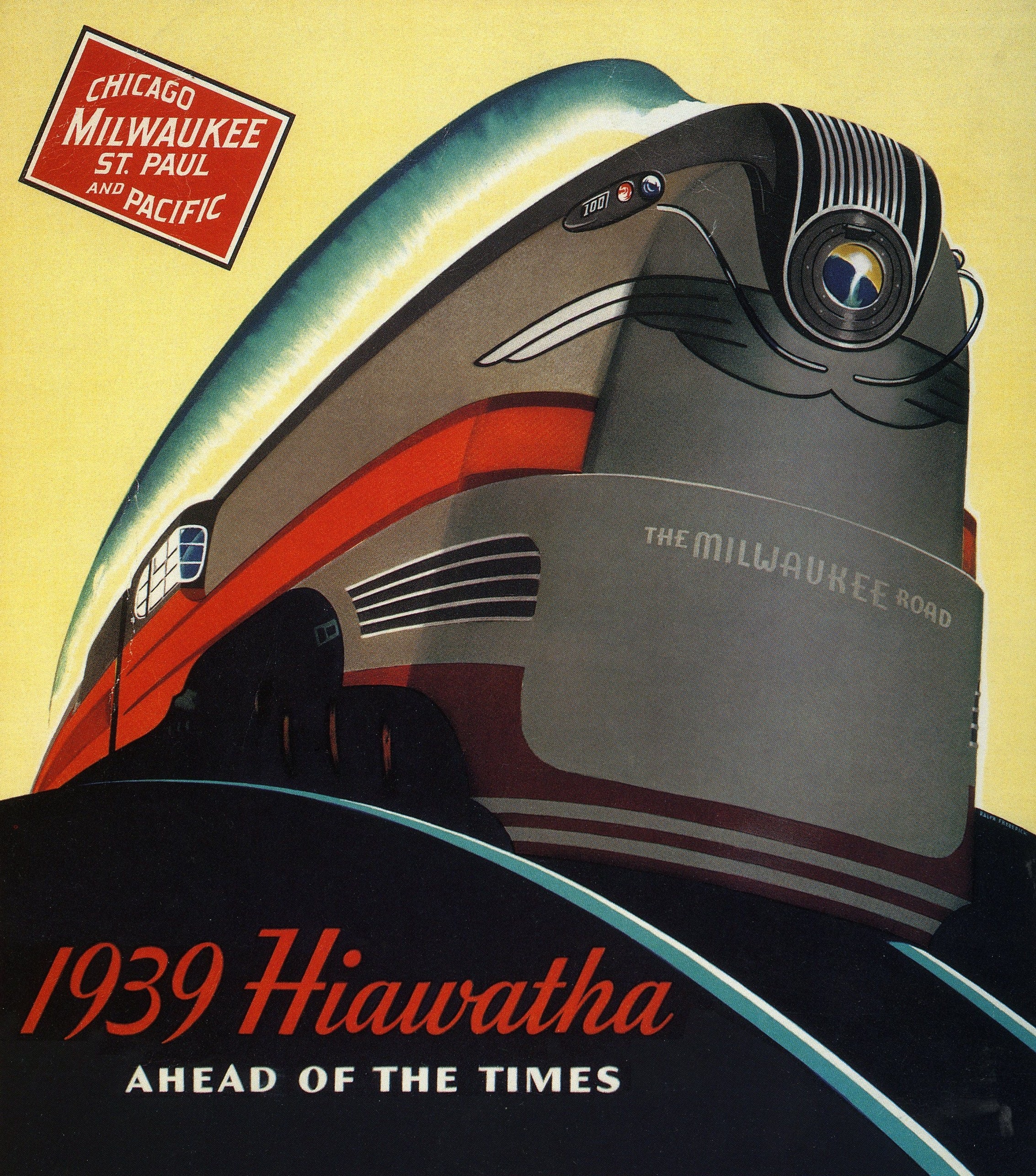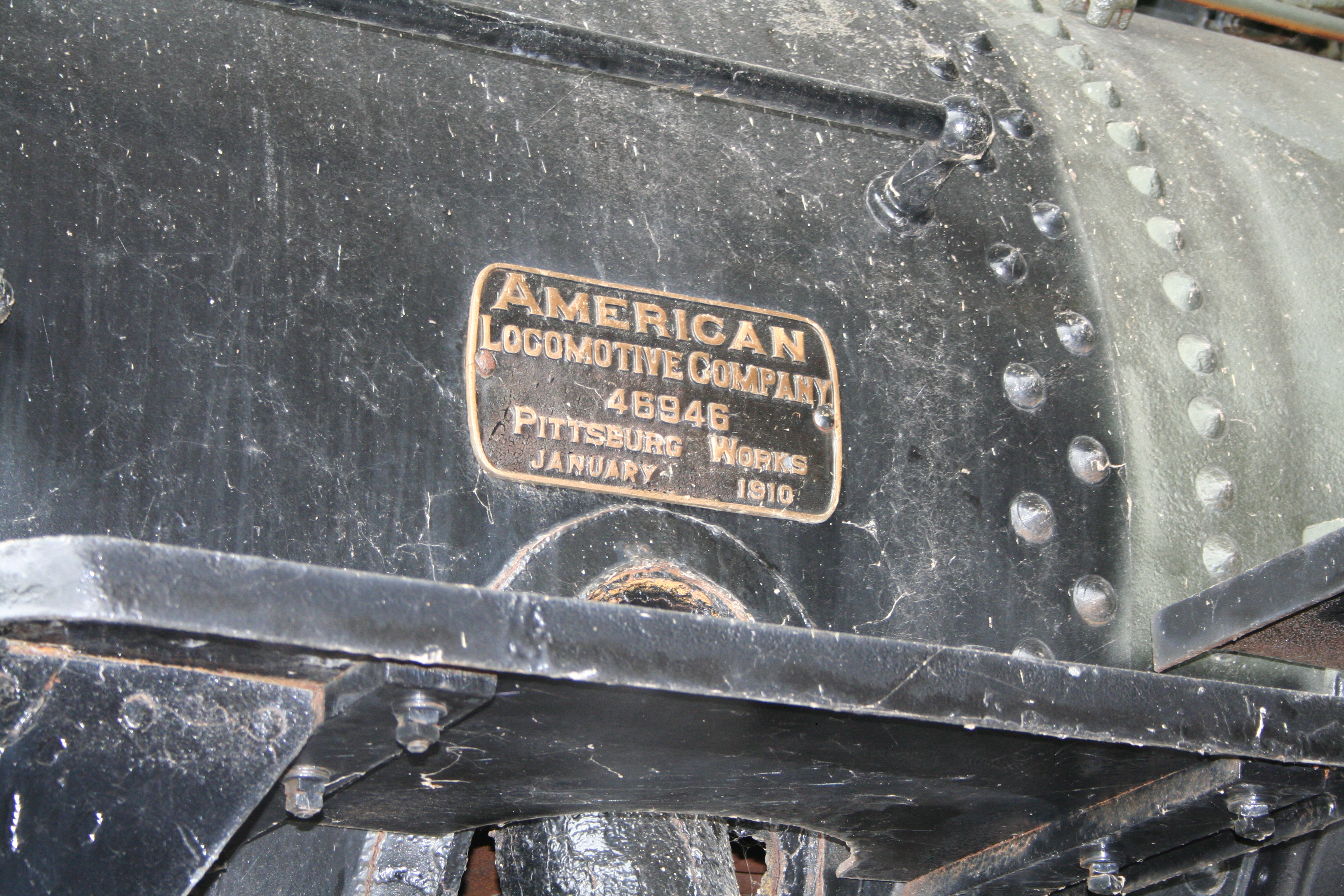|
Chicago And North Western Class E-2
The Chicago and North Western Railway's Class E-2 was a 4-6-2 "Pacific" type locomotive built by the American Locomotive Company in Schenectady, New York in 1923. Twelve were originally built, and all were later converted. Four of these locomotives gained the Class E-2-a designation in late 1934 when they were converted to burn oil instead of coal, upgraded with larger drivers, and had other changes made in order to run at higher speeds in preparation for pulling the Twin Cities–Chicago ''400'' the next year. The other eight were converted to Class E-2-b, which was similar except they remained coal-fired. The E-2-a was among the fastest steam locomotives in the world in 1935. It was recorded running in excess of on a fall evening that year as it raced the from Milwaukee to Chicago in 65 minutes, attaining its highest speeds between Highland Park and Evanston. While fast for its day, it was not quite a match for the Milwaukee Road class A and later F7 engines, which ... [...More Info...] [...Related Items...] OR: [Wikipedia] [Google] [Baidu] |
American Locomotive Company
The American Locomotive Company (often shortened to ALCO, ALCo or Alco) was an American manufacturer of locomotives, diesel generators, steel, and tanks that operated from 1901 to 1969. The company was formed by the merger of seven smaller locomotive manufacturers and Schenectady Locomotive Works, Schenectady Locomotive Engine Manufactory of Schenectady, New York. A subsidiary, American Locomotive Automobile Company, designed and manufactured automobiles under the Alco brand from 1905 to 1913. ALCO also produced nuclear reactors from 1954 to 1962. The company changed its name to Alco Products, Incorporated in 1955. In 1964, the Worthington Corporation acquired the company. The company went out of business in 1969. The ALCO name is currently being used by Fairbanks-Morse, Fairbanks Morse Engine for their FM, ALCO line. Foundation and early history The company was created in 1901 from the merger of seven smaller locomotive manufacturers with Schenectady Locomotive Works, Schenect ... [...More Info...] [...Related Items...] OR: [Wikipedia] [Google] [Baidu] |
Hiawatha (passenger Train)
The ''Hiawathas'' were a fleet of named passenger trains operated by the Chicago, Milwaukee, St. Paul and Pacific Railroad (also known as the Milwaukee Road) between Chicago and various destinations in the Midwest and Western United States. The most notable of these trains was the original ''Twin Cities Hiawatha'', which served the Twin Cities in Minnesota. The train was named for the epic poem ''The Song of Hiawatha'' by Henry Wadsworth Longfellow. History The first ''Hiawatha'' trains ran in 1935. By 1948, five routes carried the ''Hiawatha'' name: *The ''Twin Cities Hiawatha'' — the main line route from Chicago through Milwaukee to St. Paul and Minneapolis, in ''Morning'' and ''Afternoon'' editions *The ''North Woods Hiawatha'' — a spur route off the Chicago-Minnesota main line leading from New Lisbon to Minocqua, Wisconsin *The ''Chippewa-Hiawatha'' — connected Chicago to Ontonagon in Michigan's Upper Peninsula via Milwaukee and Green Bay, Wisconsin * ... [...More Info...] [...Related Items...] OR: [Wikipedia] [Google] [Baidu] |
Scrapped Locomotives
Scrap consists of recyclable materials, usually metals, left over from product manufacturing and consumption, such as parts of vehicles, building supplies, and surplus materials. Unlike waste, scrap has monetary value, especially recovered metals, and non-metallic materials are also recovered for recycling. Once collected, the materials are sorted into types — typically metal scrap will be crushed, shredded, and sorted using mechanical processes. Scrap recycling is important for creating a more sustainable economy or creating a circular economy, using significantly less energy and having far less environmental impact than producing metal from ore. Metal recycling, especially of structural steel, ships, used manufactured goods, such as vehicles and white goods, is a major industrial activity with complex networks of wrecking yards, sorting facilities and recycling plants. Processing Scrap metal originates both in business and residential environments. Typically a "scrapper" ... [...More Info...] [...Related Items...] OR: [Wikipedia] [Google] [Baidu] |
Railway Locomotives Introduced In 1923
Rail transport (also known as train transport) is a means of transport that transfers passengers and goods on wheeled vehicles running on rails, which are incorporated in tracks. In contrast to road transport, where the vehicles run on a prepared flat surface, rail vehicles (rolling stock) are directionally guided by the tracks on which they run. Tracks usually consist of steel rails, installed on sleepers (ties) set in ballast, on which the rolling stock, usually fitted with metal wheels, moves. Other variations are also possible, such as "slab track", in which the rails are fastened to a concrete foundation resting on a prepared subsurface. Rolling stock in a rail transport system generally encounters lower frictional resistance than rubber-tyred road vehicles, so passenger and freight cars (carriages and wagons) can be coupled into longer trains. The operation is carried out by a railway company, providing transport between train stations or freight customer faciliti ... [...More Info...] [...Related Items...] OR: [Wikipedia] [Google] [Baidu] |
Steam Locomotives Of The United States
Steam is a substance containing water in the gas phase, and sometimes also an aerosol of liquid water droplets, or air. This may occur due to evaporation or due to boiling, where heat is applied until water reaches the enthalpy of vaporization. Steam that is saturated or superheated is invisible; however, "steam" often refers to wet steam, the visible mist or aerosol of water droplets formed as water vapor condenses. Water increases in volume by 1,700 times at standard temperature and pressure; this change in volume can be converted into mechanical work by steam engines such as reciprocating piston type engines and steam turbines, which are a sub-group of steam engines. Piston type steam engines played a central role in the Industrial Revolution and modern steam turbines are used to generate more than 80% of the world's electricity. If liquid water comes in contact with a very hot surface or depressurizes quickly below its vapor pressure, it can create a steam explosion. Types ... [...More Info...] [...Related Items...] OR: [Wikipedia] [Google] [Baidu] |
ALCO Locomotives
The American Locomotive Company (often shortened to ALCO, ALCo or Alco) was an American manufacturer of locomotives, diesel generators, steel, and tanks that operated from 1901 to 1969. The company was formed by the merger of seven smaller locomotive manufacturers and Schenectady Locomotive Engine Manufactory of Schenectady, New York. A subsidiary, American Locomotive Automobile Company, designed and manufactured automobiles under the Alco brand from 1905 to 1913. ALCO also produced nuclear reactors from 1954 to 1962. The company changed its name to Alco Products, Incorporated in 1955. In 1964, the Worthington Corporation acquired the company. The company went out of business in 1969. The ALCO name is currently being used by Fairbanks Morse Engine for their FM, ALCO line. Foundation and early history The company was created in 1901 from the merger of seven smaller locomotive manufacturers with Schenectady Locomotive Engine Manufactory of Schenectady, New York: *Brooks Locomot ... [...More Info...] [...Related Items...] OR: [Wikipedia] [Google] [Baidu] |
Chicago And North Western Railway Locomotives
(''City in a Garden''); I Will , image_map = , map_caption = Interactive Map of Chicago , coordinates = , coordinates_footnotes = , subdivision_type = Country , subdivision_name = United States , subdivision_type1 = State , subdivision_type2 = Counties , subdivision_name1 = Illinois , subdivision_name2 = Cook and DuPage , established_title = Settled , established_date = , established_title2 = Incorporated (city) , established_date2 = , founder = Jean Baptiste Point du Sable , government_type = Mayor–council , governing_body = Chicago City Council , leader_title = Mayor , leader_name = Lori Lightfoot ( D) , leader_title1 = City Clerk , leader_name1 = Anna Valencia ( D) , unit_pref = Imperial , area_footnotes = , area_tota ... [...More Info...] [...Related Items...] OR: [Wikipedia] [Google] [Baidu] |
EMD E3
The EMC E3 is a , A1A-A1A passenger train locomotive that was manufactured by Electro-Motive Corporation of La Grange, Illinois. The EMC demonstrator #822 was released from La Grange for test on September 12, 1938. The cab version, or E3A, was manufactured from September 1938 to June 1940, and 17 were produced. The booster version, or E3B, was manufactured in March 1939 and September 1939, and 2 were produced. The was achieved by putting two , 12-cylinder, model 567 engines in the engine compartment. Each engine drove its own electrical generator to power the traction motors. The E3 was the fourth model in a long line of passenger diesels of similar design known as EMD E-units. Compared with passenger locomotives made later by EMD, the noses of the E3, E4, E5, and E6 cab units had pronounced slants when viewed from the side. Therefore, these four models have been nicknamed "slant nose" units. Later E models had the more vertical "bulldog nose" of the F series. E3 demonst ... [...More Info...] [...Related Items...] OR: [Wikipedia] [Google] [Baidu] |
4-6-4
Under the Whyte notation for the classification of locomotives, represents the wheel arrangement of four leading wheels, six powered and coupled driving wheels and four trailing wheels. In France where the type was first used, it is known as the Baltic while it became known as the Hudson in most of North America. Overview Tender locomotives The 4-6-4 tender locomotive was first introduced in 1911 and throughout the 1920s to 1940s, the wheel arrangement was widely used in North America and to a lesser extent in the rest of the world. The type combined the basic design principles of the 4-6-2 type with an improved boiler and larger firebox that necessitated additional support at the rear of the locomotive. In general, the available tractive effort differed little from that of the 4-6-2, but the steam-raising ability was increased, giving more power at speed. The 4-6-4 was best suited to high-speed running across flat terrain. Since the type had fewer driving wheels than carryin ... [...More Info...] [...Related Items...] OR: [Wikipedia] [Google] [Baidu] |
Milwaukee Road Class F7
The Milwaukee Road's class "F7" comprised six (#100–#105) high-speed, streamlined 4-6-4 "Baltic" (Hudson) type steam locomotives built by the American Locomotive Company (ALCO) in 1937–38 to haul the Milwaukee's ''Hiawatha'' express passenger trains. Following on from the success of the road's class "A" 4-4-2s, the F7s allowed the road to haul heavier trains on the popular Chicago–Twin Cities routes. The F7s are major contenders for the fastest steam locomotives ever built, as they ran at over daily. One run in January 1941 recorded by a reporter for ''Trains'' magazine saw achieved twice—in the midst of a heavy snowstorm. Baron Gérard Vuillet, a French railroading expert, once recorded a run between Chicago and Milwaukee where the locomotive reached and sustained an average for . However, the British locomotive LNER Class A4 4468 ''Mallard'' is officially accepted to be the world's fastest, with a run recorded at but authenticated at 126 mph in 193 ... [...More Info...] [...Related Items...] OR: [Wikipedia] [Google] [Baidu] |





